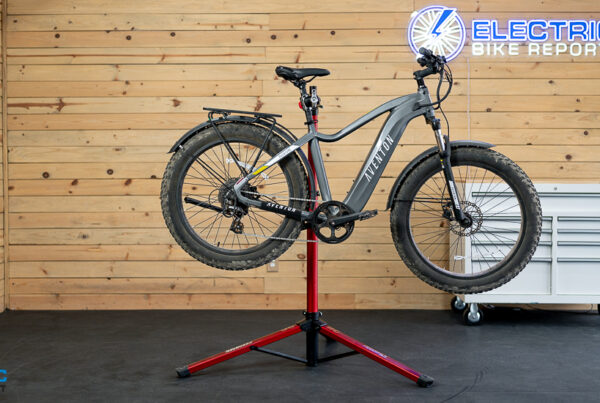There’s a lot of discussion about tariffs right now to keep out products that would disrupt domestic products, like vehicles from Tesla, Ford, GM, and Dodge. A tariff is a tax that makes imported products more expensive. There are several companies in China that are making cheap EV’s, but make no mistake, any talk about tariffs is because of BYD.
They are selling about 10,000 cars a month around the world, roughly split between electric cars and hybrid gas/electric. Most of our readers are from the USA, and you may not have heard of BYD. They have been leaving the EU and the US for last, due to the added difficulties of meeting the detailed requirements in those regions. That’s not necessarily a bad thing, because it can also mean they have been able to work the bugs out of their designs over the past ten years.
They have begun selling the AWD version of their Tang SUV in Norway, as the first step in their EU expansion. Norway has generous government subsidies for EV purchases due to their oil-fed sovereign wealth fund. What this means is that Norway has very few people, and a LOT of oil and natural gas, so the taxes on their oil industry have created a huge pile of surplus cash that they use to provide benefits to their citizens. It also helps that their cities are very densely packed, so Norwegians typically don’t have to drive far to get around. Also, gas and diesel car engines may have a hard time starting in their sub-zero winters, while EV’s run just fine in the cold.
BYD has also opened up a warehouse and office near Los Angeles (in Pasedena), in preparation for their push into US markets. And its not just cars, BYD is a huge global company that also makes large electric and hybrid vehicles like buses, heavy-transport trucks, trash-trucks, forklifts, and batteries for power storage from solar farms.
Competition is good, but the history of BYD appears to show that they have the full backing of the Chinese government, and the companies that it will be competing with feel that BYD has an unfair advantage, since they don’t actually need to make a profit to survive. For instance, customers in South America, Africa, and China have the option to buy the BYD “Seagull” for roughly $12,000. That’s an eye-popping price for an EV, even if it is pretty small.
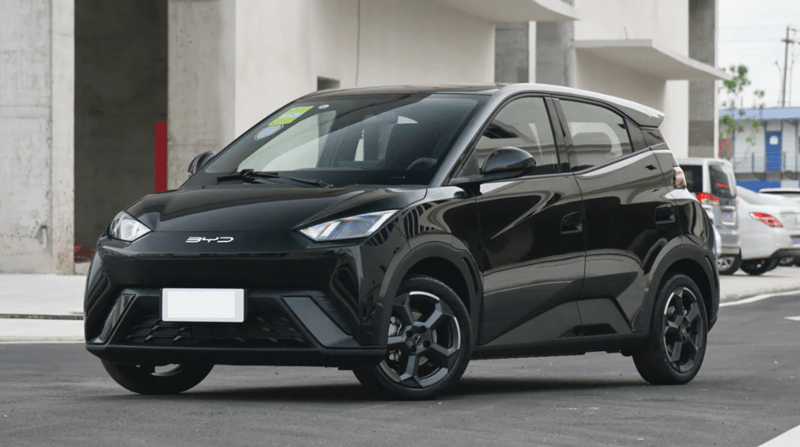
The pic above is the very tiny BYD Seagull, and I suspect there are no people in the picture to hopefully make it appear to be larger than it actually is. If you live in the USA, you will probably never see one on the roads.
It does meet the European standard for a Class-A “city car” with six airbags, and it does have four doors with a hatchback. The wheelbase is a snug 98 inches with very little body overhang, and the lowest-priced version with the 30-kWh battery weighs 2600-lb (1600-kg). Tariffs have varied from one country to the next, so the reported purchase price varies widely. In spite of all this, BYD claims that in 2023 they sold a little over 239,000 Seagulls.
Now that you’ve read this far, let’s take a look at the cars that the proposed tariffs may be applied to when BYD expands into the US…
_______________________________________________
The Large BYD cars
Right now, it appears that BYD is making cars on three platforms…large, medium, and small. Since US customers will probably never be able to buy a Seagull, lets go right to the big BYD’s, a 4-door sedan and a full-sized SUV.
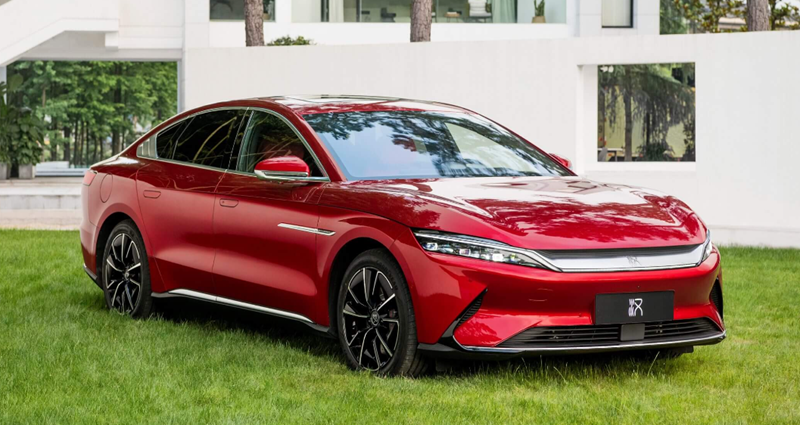
The HAN
Some of the BYD’s are named after ancient Chinese dynasties, and the majority of current Chinese citizens are considered to be from the Han ethnicity. The prices on the Han sedan vary widely, not only because of tariffs, but because of the long list of options. Of course the big ones are…do you want Front-Wheel-Drive, or AWD? Then, do you want the lower-priced standard battery, or the long range version? That being said, the Han is typically produced with upscale luxury/sport options.
The potential tariffs in the US are still undetermined, but I have seen prices on the web of the Han being sold in various countries anywhere from $25,000 to $42,000
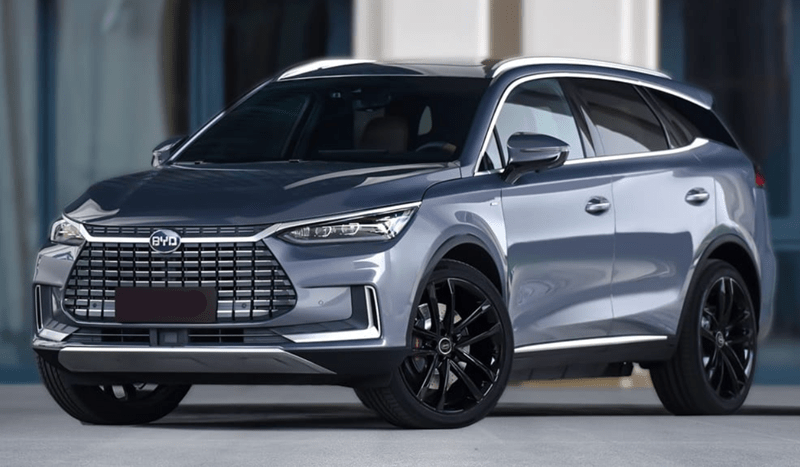
The Tang
The Tang dynasty was the most prosperous in China’s history, and BYD named their big SUV after them as a good omen. In 2015 BYD took their gasoline “S6” SUV model, and made it into a plug-in hybrid (hybrid shown in the pic above). The hybrid has a 32-mile or 70-mile “electric only” range, depending on the size of battery chosen.

The White SUV here is the EV version of the Tang. The hybrid retains the grille of the S6, and the EV Tang began using their “dragon face” styling in 2022.
The Tang has a 2-3-2 seating arrangement for a total of seven seats, and all the rear seats fold flat for a generous cargo area. These became available in Norway in 2019, and it remains to be seen if they will be imported to the US. So far, I have found them being sold for the equivalent of $38,000 to $47,000
Out of all the BYD cars, the Han Sedan is the only one currently listed for ordering on BYD’s USA website.
_______________________________________________
The Medium-Sized “e-Platform 3.0”
There are several vehicles being produced by BYD on this platform, and it was designed from the ground up to be versatile so that the bodies can change, but the platform remains the same. They tend to have aquatic names.
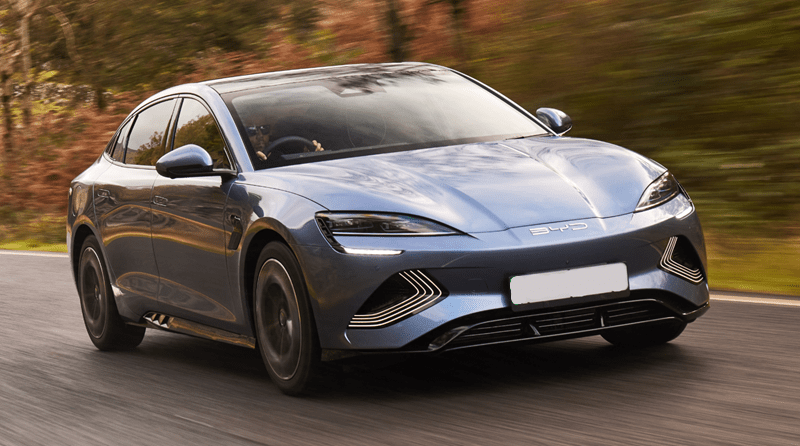
The BYD Seal
Their most expensive midsize is the sport sedan, called the “Seal” on their home website. It can also be named the Song, depending in which country it is being sold. There are THREE different power levels for the Rear-Wheel-Drive version, plus two AWD versions.
If you select the high-performance AWD version, it is badged as the “3.8” denoting the 3.8 seconds it takes to accelerate from 0-to-100 km/h (0-63 MPH). The standard voltage for the Seal is 800V, which allows for very fast charging. Total production from 2022-23 has been roughly 135,400 units.
_______________________________________________
Seal U
The Seal U has a U in its name for “Utility”, and its sloped rear hatch would suggest that westerners might call it a crossover SUV? So far there is only a Front-Wheel-Drive version, and depending on which country it is being sold in, the EV or Hybrid versions may be called the “Sealion 6”, which makes me wonder if their short electric bus will be named the “Dirty Dozen” or the “Hateful 8”.
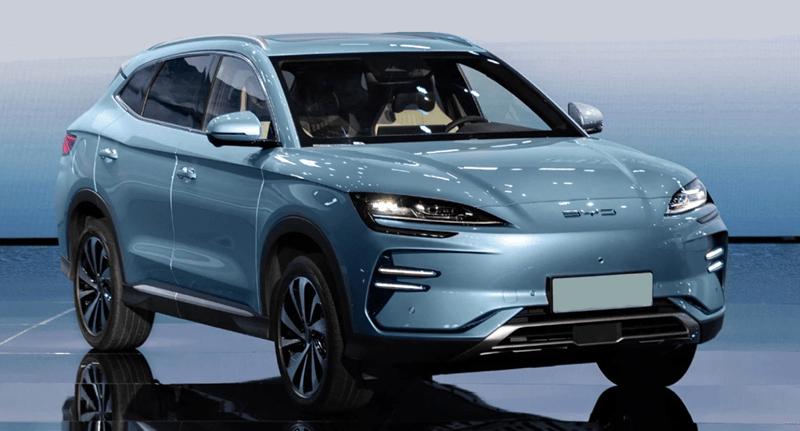
The Seal U is listed as a five-seater, with no fold-down back row like the longer 7-seat Tang.
_______________________________________________
Yuan Plus/Atto-3
Although the Yuan Plus/Atto-3 shares the same platform with the Dolphin (shown farther below), this SUV is slightly larger and more expensive (I’m told this model is the “Dynasty” when purchased in China).
It is listed as a FWD with a 201-HP motor, and…even though it is also listed as a 403V system in some reports, it is also claimed to have an 800V option. Any Voltage around 400V seems to be a code that suggests it’s intended for North America, where the Tesla charging network is the most widely available.

Since the Yuan Plus/Atto-3 shares the same platform as the Seal U, I’m having a hard time finding the differences between them. It almost seems like BYD is keeping all of their options open so they can configure any given platform to be sold in the various countries that they are expanding into. I suspect that one of them has greater crash-resistance for certain markets, and as a result is heavier (who knows?)
Some readers may know that a unit of Chinese currency is the “Yuan”, so at first I thought this was like an American naming a new model the “Dollar Plus”, but their currency is also named after one of their famous era’s, the Yuan Dynasty (1279–1368). The word translates as “round”, and refers to the Khans using round coins made from silver and copper.
The Han Chinese considered the Mongol Khans to be “foreigners”, and I think that the naming of this car line as the “Yuan” suggests that the name might also have something to do with planned foreign exports. Who knows?
This model is sold in Australia and several other foreign markets as the Atto-3, and BYD has said that the name “Atto” was inspired by the attosecond, currently the smallest time scale unit in physics. I sympathize with any employee that is tasked with coming up with a good name for a new car, because it is NOT easy. Perhaps they will make an electric food truck called the “OU-812”
Again, prices will vary widely due to options and also tariffs, but…in China the lowest-spec Yuan Plus is listed for sale at a price that translates into $16,700 in USD. France seems to have the most restrictive tariffs, with a “Value Added Tax” / VAT that results in the price for the Atto-3 ending up at €46,690, or…$50,650 in USD (Yikes!)
I’ve been told that the current tariff on Chinese-built EV’s coming to the US is 25%, and congress is discussing if it should be more.
“…BYD sold 412,202 Yuan Plus EVs in 2023, with 100,020 of them exported, or 42% of its total car exports for that year…”
______________________________________________
Dolphin
I am unsure about the precise differences that distinguish between a hatchback, crossover, or a small SUV, but…this “5-door” is currently the smallest BYD that might be sold in the US, and as a side note, they are currently being sold in Mexico.
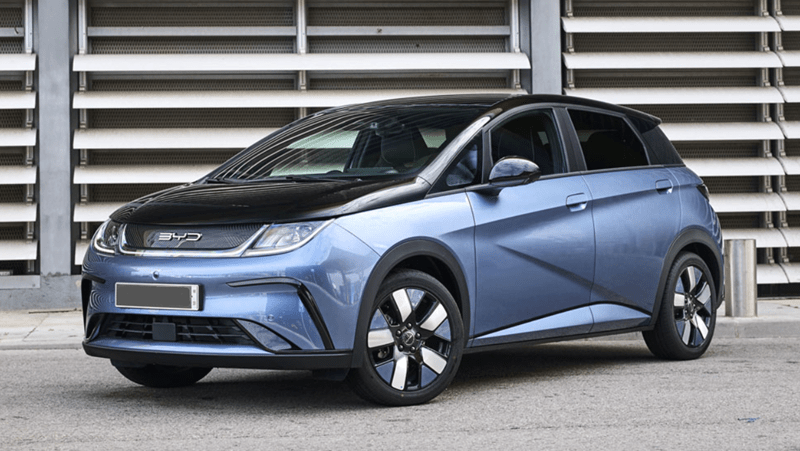
I think the Dolphin’s biggest competition will be the Chevy Bolt, or one of the other small EV’s that will soon be available. Tesla has avoided the “affordable” market, and has focused on upscale customers. However, some of the Tesla customers may have bought a more affordable EV if there was a greater selection in the US over the last few years.
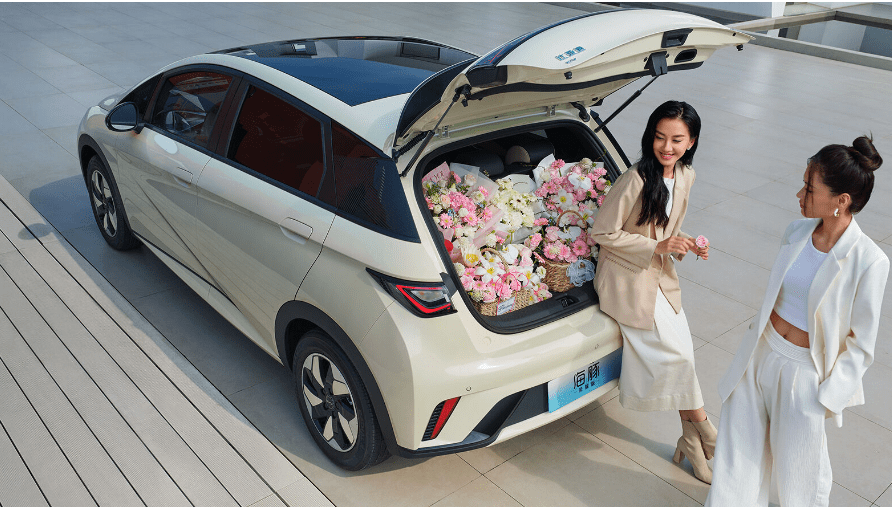
If you look closely at the rear edge of the rear door in comparison to the distance to the rear hatch, we can see that there is not a lot of room in the rear cargo area. You can even see the right rear headrest in the hatch opening. The flowers are stacked to try and make the cargo area look as big as possible. There’s nothing wrong with this vehicle layout, but…you can carry four people, or two people and some cargo after folding the rear seats flat, and I am fine with that.
After looking at the listed dimensions of the vehicle, I am convinced that these two people are very small, in order to make the car look a little larger. I’m not putting down BYD’s ad agency, but even with it actually being modestly-sized, I do think this will sell well in the US if its allowed.
_______________________________________________
The BYD BATTERY
BYD formed the subsidiary “FinDreams Battery” as the development and production entity for their vehicle battery packs, and recently they have signed an agreement with Borg-Warner to produce their large heavy-industry packs for buses, trucks, and solar-panel energy storage.
There are a couple of interesting things about their packs. First, they committed early in their battery development to using the Lithium-Iron-Phosphate chemistry (LiFePO4/LFP). The benefits were that it has a very long cycle life (in years), excellent fire-resistance, and they don’t require any cobalt or nickel. Both of these elements are expensive, and the available supply is somewhat limiting when you want to produce millions of EV’s.
Tesla and just about every other EV manufacturer has used NCA or NCM (Nickel/Cobalt/Aluminum or N/C/ Manganese), since these chemistries provided the maximum range per battery volume. BYD gambled that the LiFePO4 chemistry would improve rapidly, and felt that the existing benefits in 2008 made LiFePO4 the right choice for their early hybrid, the BYD F3DM.
BYD started out making NiCD batteries in 1995 when their founder noticed a shift in industry to the NiMH chemistry, leaving some customers still wanting NiCD’s. However, they too began making NiMH batteries as well, leveraging China’s affordable labor and government subsidies to compete with the larger Japanese and South Korean corporations. Within ten years, BYD was the largest global manufacturer of NiCD and NiMH cells, and they also began making Lithium cells, driven by the huge sales of Chinese smart phones.
In 2003, BYD purchased Qinchuan Auto to acquire their government license to build cars, and immediately built a new factory to produce a copy of the Toyota Corolla called the F3, with a gasoline engine version, and also an optional hybrid drivetrain. The BYD hybrid F3DM (DM = Dual Mode) likely had most of it’s inspiration from the 1998 Toyota Prius (featuring a Panasonic NiMH battery). And based on the success of their plug-in hybrid, BYD decided to make their first all-electric E6 just a year later in 2009.
I’m only mentioning these background details to show that BYD has been making batteries and EV’s for quite some time, even if they are new to US customers.

In 2020, BYD began selling vehicles with their in-house “Blade” cells, which vaguely resemble a large sword. These cells are big enough that the pack uses only one cell in parallel. There are several sizes of blade cell, with the thickness and length being variable, and so far the height (9 cm / 3.5 inches) has been the constant. They are mounted traversely, so the cell “length” correlates to the width of the vehicle.
The most common Blade cell length is 96 cm (37.8 inches). BYD claims that their liquid-cooled battery can be fast-charged from 30% to 80% in less than 30 minutes. Some export markets require a non-conductive coolant in case there is a leak after a crash, and BYD specs their more expensive “purple” coolant for those cars.
The Lithium-Iron-Phosphate / LFP chemistry has a nominal voltage of 3.2V per cell, compared to 3.7V for the more common NCA/NCM, so it takes more cells to reach a chosen voltage. Regardless of the model, I have found listings for various voltages for BYD cars, so “apparently” they will make a batch of any of their voltage systems for any of their models, if you order enough of them. Here are voltages I have found listed for BYD cars.
403V = 126S / 1P
550V = 172s / 1p
640V = 200s / 1p
800V = 250s / 1p
As a side note, Tesla began using the LiFePO4 chemistry in their standard-range packs in 2020, with their max-range packs still using the NMC chemistry.
_______________________________________________
Random Notes
All EV’s benefit from the instant torque of electric motors, so even the “economy” versions of EV’s have snappy acceleration, and BYD’s cars are no exception. BYD cars have a 6-year warranty, or 150,000 km (93,000 miles), so I am very interested to see how reliable they end up being.
The Chinese car companies BYD, Geely, MG, and Chery, are scouting sites to build manufacturing facilities in Mexico to be a part of NAFTA, and hopefully avoid tariffs for cars sold in the US. MG is a venerable British sports car marque (Morris Garages), and they were purchased by the Shanghai-based SAIC. (see: MG Cyberster sports EV). Geely is not well known here, but they are in the same corporate family as Volvo, so there is an existing dealer network to sell and service them.
“…BYD cars have been sold in Thailand, Indonesia, Brazil, Norway, Australia, Mexico, Singapore, and Ireland…”
_______________________________________________
BYD in the USA
Part of the reason I am so certain they will definitely be moving into US sales of their EV’s is because they are already manufacturing electric buses in California (with union labor). City commuter buses are expensive, and typically bought with the citizens’ tax money, so those purchases lean towards products that are made in America. That was no problem for BYD, they simply built a new factory in Lancaster, just an hour north of Los Angeles (46147 BYD Blvd, Lancaster, CA 93534).
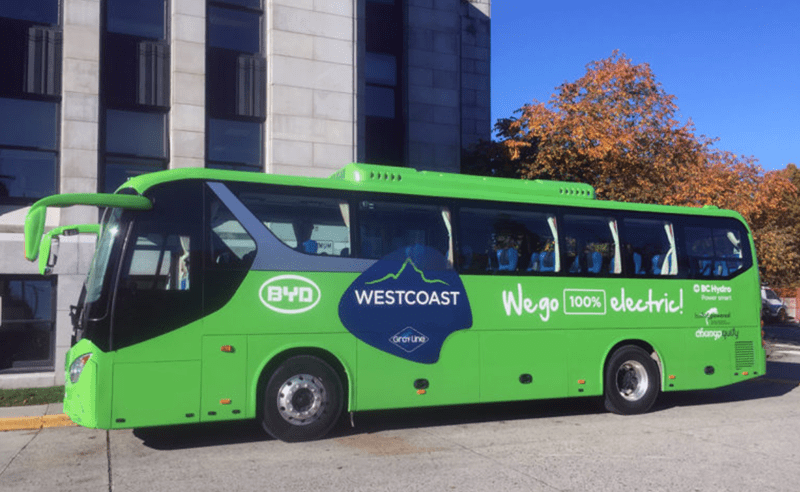
The pic above is a BYD electric bus from British Columbia.
Their current USA headquarters are at:
888 E. Walnut St, Suite 200A
Pasadena, CA 91101
213-748-3980
[email protected]
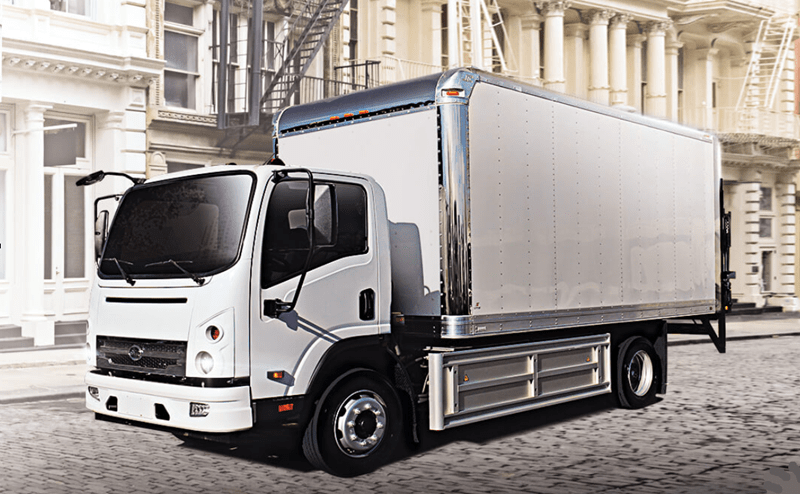
BYD has a catalog of 2-axle and 3-axle Class-B trucks that can be configured as a trash-pickup, box-delivery, dump truck, and even a Class-A 18-wheel over-the-highway tractor (click here).
_______________________________________________
Big Reveal in May, 2024
Big news, BYD just released pics and information about their new 4-door truck, and it will be a plug-in HYBRID!
You can see an album of pics by clicking here.
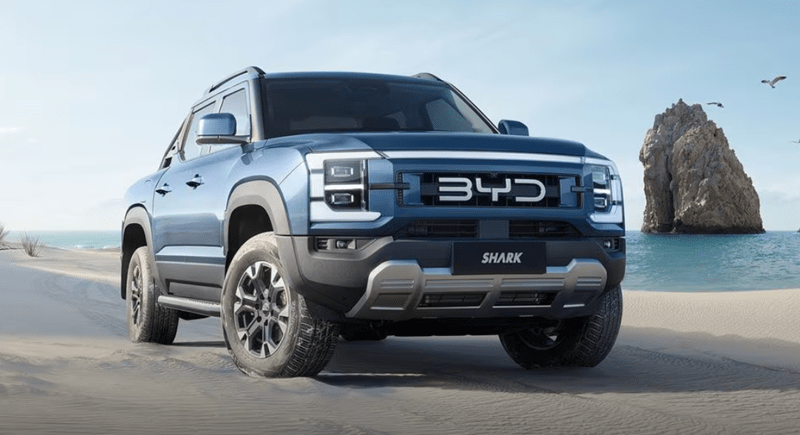
_______________________________________________
FSB Leopard 5
As soon as this article was published, a reader contacted me to tell me that BYD also recently launched a completely separate “upscale” brand called FSB, and their first product has already sold several thousand units. FSB stands for “Fang Sheng Bao” which translates to “Formula”. It is currently presented as an upscale luxury/sport off-road company. It’s aimed at customers from Range Rover and Land Cruiser.
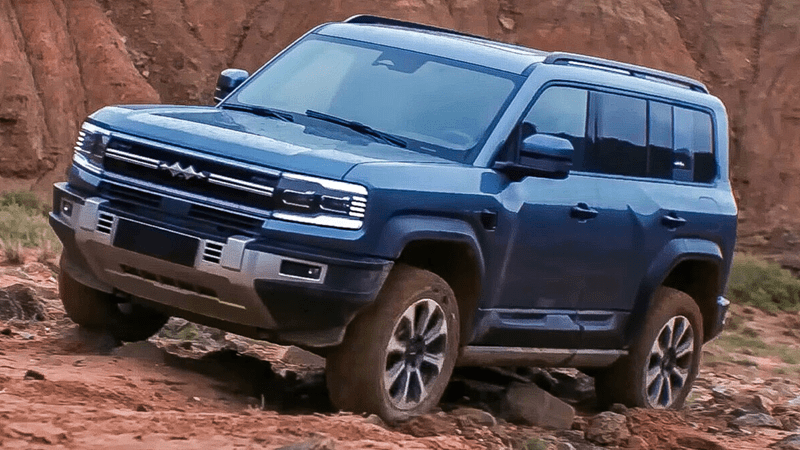
The pic above is the fully-loaded FSB Leopard 5, and FSB announced that they will also be releasing a slightly smaller version called the Leopard 3.
_______________________________________________
LINKS
The BYD website with the different models is limited to the models that are available in the country that you click on, so here is the link to their “Caribbean” website, which is in English and has five of their models (click here)
Click here for the reddit chat forum for BYD
Click here for their Facebook page
______________________________________________
Written by Ron/spinningmagnets, May 2024
.
.
.
#BYD #theyre #huge #theyre #coming
Source link






